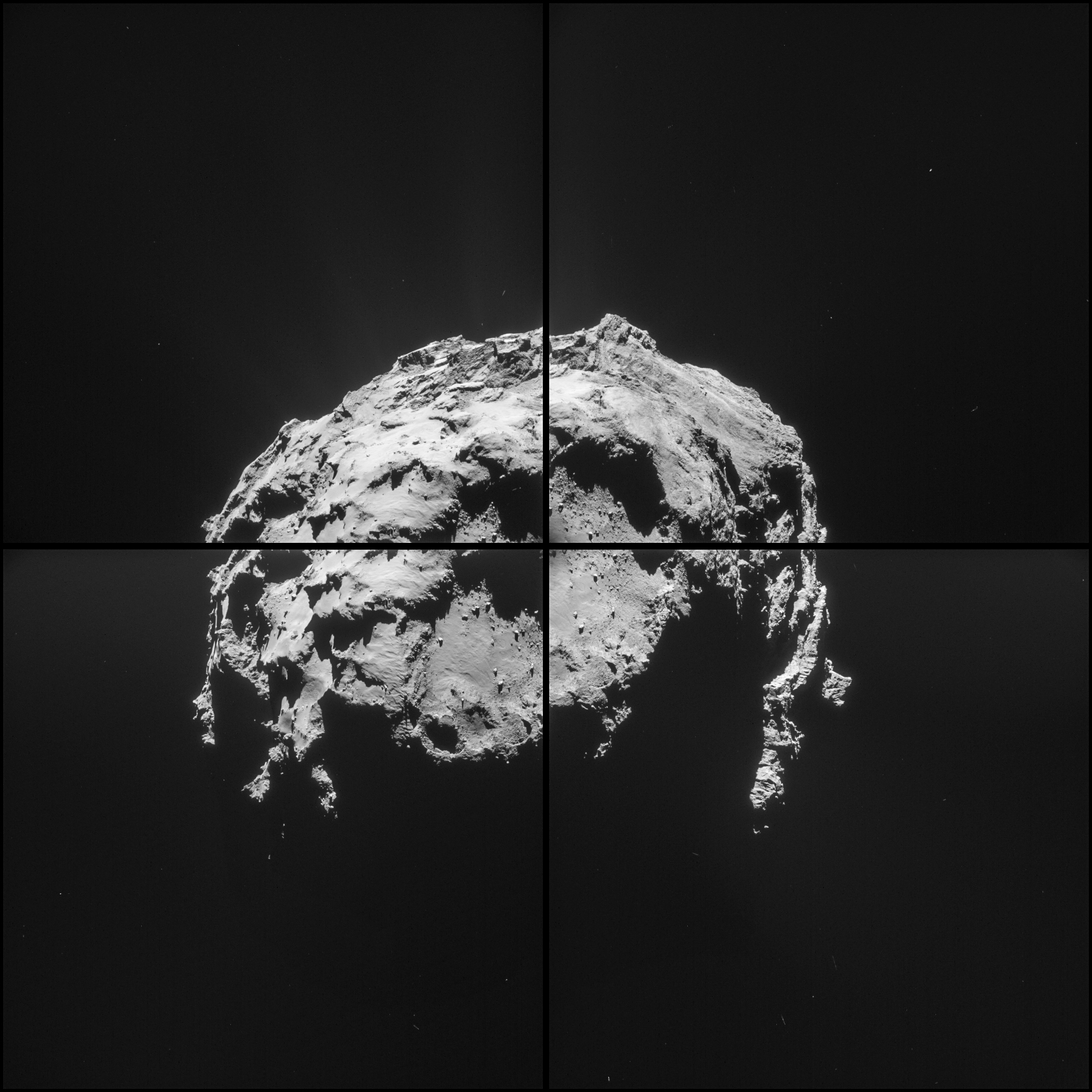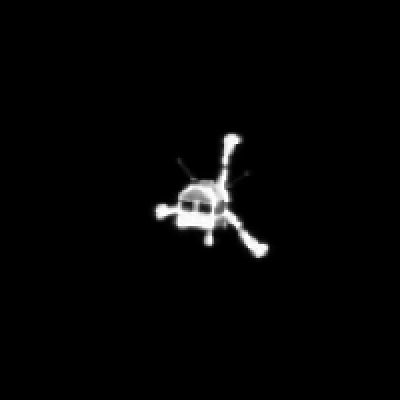Rosetta's Shadow
Rosetta has captured a selfie of its shadow on comet 67P in what is the highest-resolution image to be taken by the probe.
The image was taken during a Valentine's Day flyby when Rosetta passed within just four miles (6 km) from the surface of the icy comet.
As well as the craft's shadow, an 'alien' glow is seen reflected onto the comet, which scientists believe is caused by a trick of the light from the sun.
The glow causes the shadow to be fuzzy and somewhat larger than Rosetta itself, measuring approximately 65ft by 165 ft (20 by 50 metres).
If the sun were farther away, the shadow would be sharp and almost exactly the same size as Rosetta, which is around 2 x 32 metres.
and how
A brief recap on the story so far
Esa's Rosetta spacecraft launched on 2 March 2004 aboard an Ariane 5 rocket, on a mission to visit comet 67P/Churyumov-Gerasimenko.
It took more than ten years to reach the comet, and on the way it flew past Mars and two asteroids.
On 6 August 2014 it entered orbit around the comet, beginning a series of complex manoeuvres to get the best views possible.
On 12 November 2014 Rosetta successfully released a smaller vehicle it had carried called Philae. This small probe bounced twice on the surface before coming to rest.
Although Philae's landing did not go as planned, it was still able to complete more than 90 per cent of the science it was intended to do before its main batteries died, sending the probe to sleep.
The location of the lander is currently unknown. It is thought to be in partial shadow near a cliff but, as the comet approaches the sun, the additional light may charge its solar panels enough for the lander to wake up.
Rosetta, meanwhile, is continuing its mission around the comet. 67P is approaching the sun and, by August this year, it is thought its activity will have dramatically increased.
This will release much more ice, vapour and other materials from the surface - and Rosetta will be there to watch it all happen.





















































